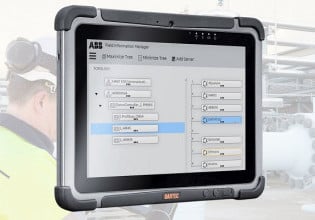Does 3D Printing Continue to Drive Digital Transformation?
As digital transformation continues to rise, technologies such as 3D printing also skyrocket. What is the relationship between these terms, and how can 3D printing help manufacturers and shops on their journey toward digital transformation?
As electronics have decreased in cost, connecting things digitally has been brought to new heights. With more data, companies can run simulations, digital twins, and more technologies disrupting manufacturing and business strategies around the world.
Like many early adopters, it can be expensive, hard to predict an ROI, and easy to fail. As connected devices hit the market, some marketers hyped connected technology as the fourth industrial revolution, and companies not on the cutting edge would be left behind.
3D Printing: A Driver in Digital Transformation
Many companies are investing in new technology, like the internet of things (IoT), Industry 4.0, machine-to-machine, big data, machine learning, and more.
.jpg)
Figure 1. The print head of a 3D printer machine printing plastic model.
Meanwhile, 3D printing has continually been a driver in digital transformation. It has also provided some good examples of how companies use new technology for hype and/or add value to operations. Early adopters hyped up the concept of 3D printing, but few case studies were published to show results and how the process was being used in different applications successfully. However, the lack of published results from companies might have been a way to conceal how a company might be trying to hide early success to keep the technologies cutting edge.
3D Printing Industrial Application: Machine Shop
A machine shop CEO told me he was using 3D printing for years without clients knowing.
Machine shops have a blueprint to follow. Generally, shops aren’t told how to build something. Parts simply need to fit the specifications of what the customer ordered. The CEO continued saying that he has been selecting parts with specifications that can be 3D printed faster than traditional methods or reduce his machinist's workload.
3D printing is not known for speed. There is a tolerance difference between CNC machines and 3D printers. He said engineers use digital CAD models to scale a part up by about 1%. The oversized part with loose tolerances can be printed faster. Then, to gain needed tolerances, technicians and engineers use the same CAD model or G-code at size to finish the part in a CNC machine.

Figure 2. Simulated G-code viewer. Image used courtesy of All3DP
The combination of 3D printing and CNC machining helped the facility produce small, complex, and/or custom low-volume part with a faster turnaround. However, the CEO said he doesn’t tell people how he is able to offer such fast turnaround times and lower costs to clients unless they ask. Most clients don’t seem concerned; they just wanted lower costs and turnaround times.
Some 3D printers are connected to a network or the internet that are monitored and operated remotely. This innovative process serves as an example of the future of manufacturing, as many companies are moving toward a full digital thread.
This would provide data throughout the entire company and production, enabling advanced automation to expand digital transformation further. 3D printing is a driver of digital transformation because it supports trends associated with the future of manufacturing, such as increasing automation, providing feedback, operating remotely, and supporting decentralization.
3D Printing Brings Flexibility and Time to Market
Another driver of digital transformations is flexibility and time to market. Witchita State University started an innovation campus with big goals to get a normal design cycle that would normally take years, and reduce it to 90 days. This tight timeline is only possible through digital testing, tooling, and experimentation to bring a product to market.
To work effectively, simulation and digital twin technologies need real-world data from connected devices and automated processes to increase improvements and decrease the time between iterations. 3D printing provides some good examples of how companies use the process to drive digital transformation.
Other digital transformation drivers that this series will cover are data, dashboards, and cloud services. Additionally, part three of this series will discuss societal drivers that seem to be forcing manufacturing into a digital world, such as population, war, and disease.





